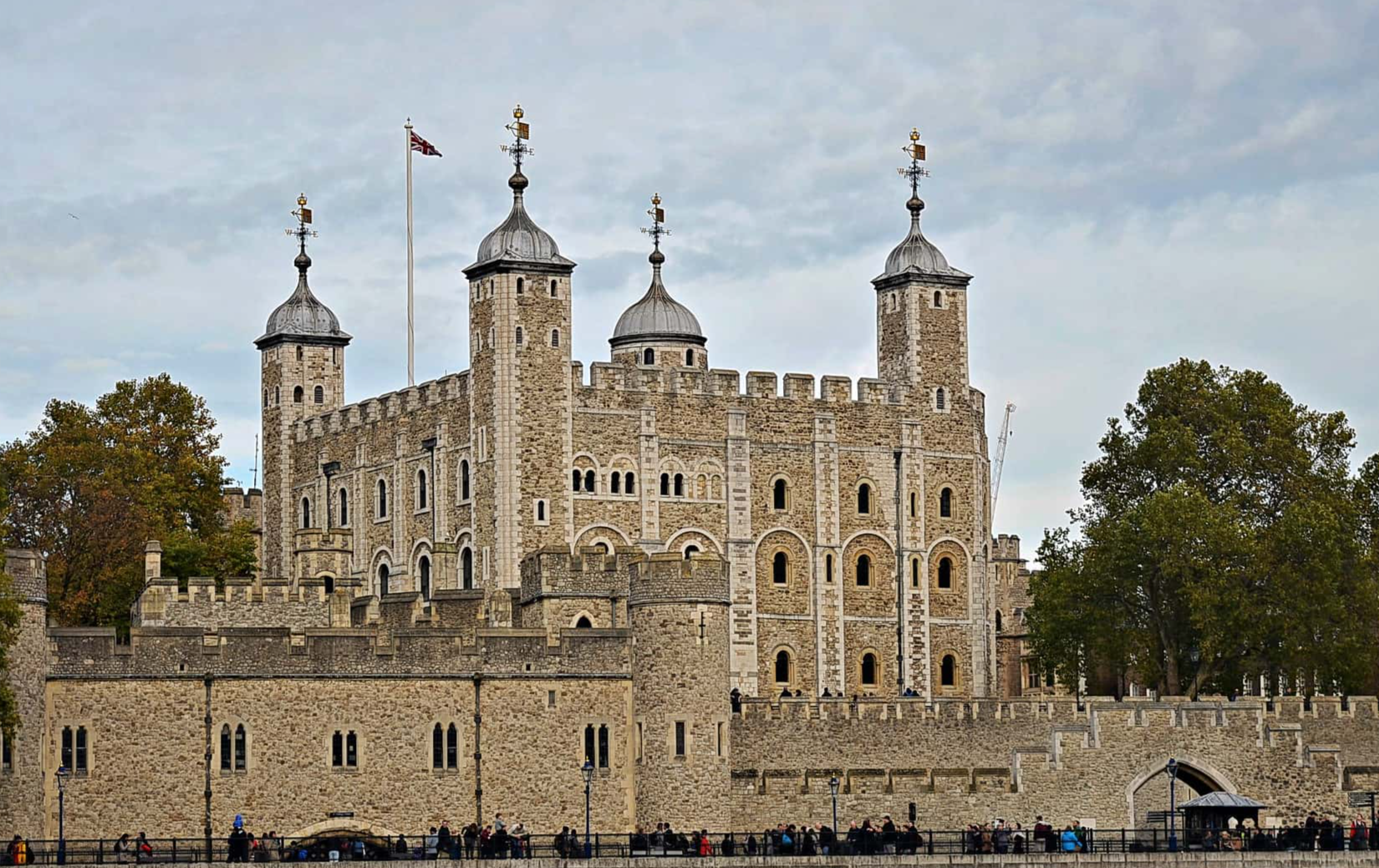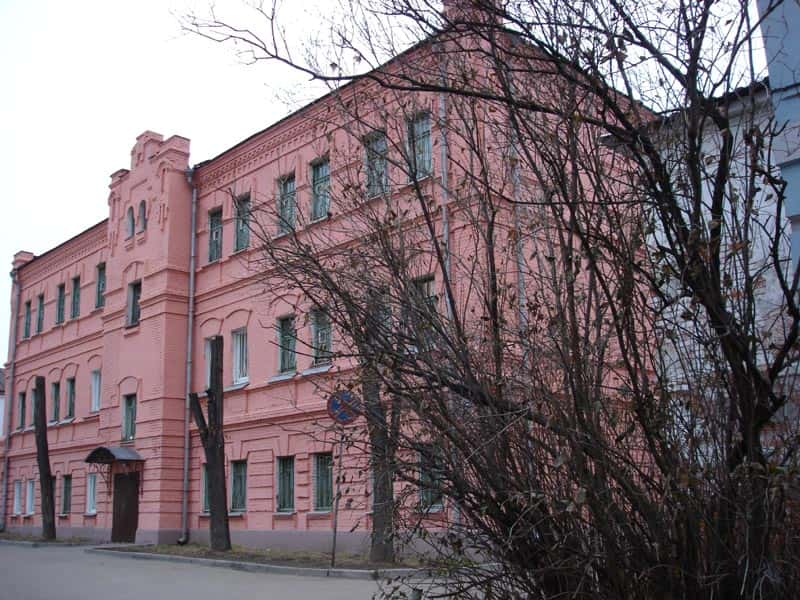"It must surely be a tribute to the resilience of the human spirit that even a small number of those men and women in the hole of the lock up system survive it and hold on to their humanity". —Howard Zinn
Prisons have been a part of culture since humans decided to wield power over one another—so, quite a while. Here are 24 facts about the most brutal and vicious sites of prisons in the world.
1. American Made
Closed in 1963, Alcatraz Federal Penitentiary is the most famous jailhouse in the United States. Many of the nation's most notorious criminals were imprisoned there, including Al Capone and Machine Kelly, because of its location on a small, rocky island in the San Francisco Bay that made it nearly impossible to escape. That didn’t stop 36 different men from trying to get out alive over the years, however, only three of them successfully.

2. So Close, Yet So Far
Though every attempt at escape from Alcatraz led to recapture or perishing, one man (and only one man) did successfully swim across and reach land. John Paul Scott was a convicted bank felon who in 1962 tried to flee "the Rock" with another prisoner, Darl Lee Parker. They escaped by sawing through bars in the kitchen, running to the edge of the island, and jumping. Parker didn't make it very far, but Scott actually reached the mainland, was found suffering from hypothermia, and was subsequently recaptured.
3. Send Them to the Tower
The most famous jailhouse in the UK, the Tower of London, was home to some of the most notable prisoners in history and was active from the 12th to 20th centuries. The English ruling class oppressed many people for hundreds of years, and today the Tower is said to be haunted by those victims. Among the most significant prisoners were King Henry VI, Thomas More, and the many wives of King Henry VIII.
4. Rocket Jailhouse
For 100 years, French Guiana's Devil’s Island was home to various prisoners, from many of Napoleon’s enemies to hardened criminals. The island was known for its incredibly harsh conditions and for being rife with disease. Today, however, the jailhouse complex on the island is home to a rocket launch center.
5. Mandela Effect
Off the coast of Cape Town, South Africa lies a jailhouse complex that held one of the world’s most famous leaders in history. Originally set up as a leper colony, Robben Island was converted to a jailhouse during the era of apartheid in South Africa, and Nelson Mandela spent 18 years there.
6. Hilton of Hanoi
During the Vietnam battle, the North Vietnamese converted a French jailhouse into a prisoner camp for captured Americans. This is where US Senator John McCain was imprisoned, and his fellow prisoners called the Hỏa Lò jailhouse the Hanoi Hilton. The jailhouse, however, was originally a place where many Vietnamese were kept in subhuman conditions, and represented the colonial exploitation of the natives by the French.
7. Slave Trade Jailhouse
In 1482, the Portuguese erected the Elmina Castle in modern-day Ghana, making it now the oldest European building south of the Sahara. First established as a trading post, it became a vital node of the Atlantic slave trade, and was also used as a jailhouse for those who rebelled against capture, because it’s just easier if the human submits themselves to slavery, right?
8. French Inferno
The French were pretty good, it seems, at holding prisoners. As if prisons weren’t enough, they created the Oubliette, a specialized dungeon beneath a trapdoor out of reach to those under it. Derived from the word oublier, meaning to forget, the dungeon was a narrow passageway large enough only for the confines of a standing body, which allowed the prisoners to wallow away to their end.
 Wikimedia Commons, Sir Magnus Fluffbrains
Wikimedia Commons, Sir Magnus Fluffbrains
9. Roman Dungeons
Beneath the church of St. Joseph of the Carpenters ferments the Roman Empire’s Mamertine slammer, which horrified many of Rome’s enemies, including Simon Bar Giora, defender of Jerusalem, and possibly Saint Peter—before his upside-down crucifixion at the hands of Nero.

History's most fascinating stories and darkest secrets, delivered to your inbox daily.
10. Better Living Standards
Most famous for the Attica slammer riot, the Attica Correctional Facility is a supermax jailhouse in New York. In 1971, riots broke out when about 1,000 of the 2,200 inmates demanded better living conditions after years of physical, mental, and gender assault from guards. Four days of negotiations took place, and at the end of the uprising 43 people lost their lives.
11. Gestapo Had No Mercy
From 1940-1944, the German Gestapo passed over 50,000 prisoners through the Montelupich jailhouse in Krakow, Poland. Everyone from British spies to German citizens were sent to this terrifying jailhouse, where they were interrogated under some of the worst conditions, which is saying A LOT. After WWII, the Soviets converted the jailhouse into...another slammer, and tortured many Polish army people of the Home Army of the Polish resistance.
12. Prisoner on Prisoner
The largest jailhouse in Russia, the Vladimir Central Jailhouse is infamous for holding the far left political prisoners of the Soviet Union. The brutality over inmates at this facility was part of the bid—prisoners were often beaten to the end and even ordered to beat each other from time to time. Just to mix things up.
13. Dracula’s PTSD
Vlad the Impaler is notorious for many things besides, you know, being an impaler of things. For one, he was (if in name only) the inspiration behind the novel Dracula. During his reign, he was known for his harsh tactics, but perhaps they were conditioned into him through his imprisonment in the Tokat Castle by the Ottomans when he was a child.
14. Jailhouse Vacation
The ancient Czech Spilberk Castle was converted into a lock up for political opponents during the Habsburg Empire’s reign. The chambers under the castle became known as the “dungeon of the nations,” and tortured its inhabitants while they were chained to the walls. Active until 1961, it is scary to imagine the horrific history one can feel while there. But, if you’re curious, the castle now allows people to stay in the chambers of pain over night, without electricity.
 Wikimedia Commons, Bjalek Michal
Wikimedia Commons, Bjalek Michal
15.Slammer Without Rules
The La Sabaneta jailhouse is one of the most dangerous prisons in the world, as there is rampant terror in this facility in Venezuela, exasperated by the estimated 3,700 prisoners housed in a building designed for 700. An outbreak of cholera once ended over 700 people, and riots in 1994 led to the bloodshed of over 100 inmates. Guards often leave the prisoners to their own accord, as the confluence of their understaffing with the poor conditions leave it too dangerous to enforce rules.
16. A Brazilian Bloodshed
The Carandiru Penitentiary in Brazil once housed over 8,000 inmates at its peak, and its awful conditions have inspired books, films, songs, and a museum where it once stood. In 1992, it was home to the Carandiru bloodshed, now considered one of Brazil’s biggest human rights violations, when army personnel laid siege to the slammer and ended over 100 rioting prisoners.
17. Thai Executions
One of the world’s worst active state correctional facilities, in the Bang Kwang Central Jailhouse in Thailand, each inmate is chained with leg irons for the first three months of their sentence, and there are over 700 people on capital penalty. It was also home to the first European citizen to receive the capital sentence in Thailand, Alan John Davies, who was detained for trafficking drug.
18. Baby Steps
San Quentin Jailhouse: Infamous for its horrid conditions, being a pivotal site of the Civil Rights movement, and its cultural celebrity, this facility conjures up a lore like no other. The facility has recently taken steps to better treat its inmates, and now boasts a rehabilitation center, a reentry program, on-site college degree-granting, and even an inmate-run newspaper, the San Quentin News.
19. The Ending Fields
One of the most horrific sites to see in the world, Tuol Sleng was a high school that the Khmer Rouge converted into a slammer during their genocide of Cambodian people in the 1970s. In four years of operation, over 17,000 people were held prisoner there, with only a handful of known survivors. The Tuol Sleng museum now stands to memorialize and educate people on the horrors of genocide and the dangers of complacency in a globalized world. Though this took place from 1975-1979, it took until 2010 for the jailhouse chief to be sentenced to lock up by an international court, making him only the first Khmer Rouge leader to be tried for terror against humanity.
 Wikimedia Commons, Sigmankatie
Wikimedia Commons, Sigmankatie
20. A Jailhouse of Beauty
Probably the most gorgeous lock up in the world, the stunning Chillon Castle of Switzerland used its chambers as a cells, most notably during the 16th century, when the dukes of Savoy threw their opposition in the dungeons. The most famous of these prisoners was Francois de Bonivard, a Genevois monk who was captured for his defense of his homeland from Savoy. Lord Byron was so enamored by his story that he wrote an epic poem on the monk’s imprisonment called The Prisoner of Chillon.
21. Home to Nationalism
Kilmainham Gaol is a famed Irish Jailhouse known for its diseased, non-segregated overcrowding, starvation tactics, and guard beatings. The gaol played a large part in the modern history of Ireland: Many Irish nationalists were imprisoned there, which helped to shape what Irish nationalism became. To solidify this, it now houses a museum on the history of Irish nationalism.
22. Korean Concentration Camp
Holding up to 50,000 people, Camp 22 of North Korea became famous after two of its former guards defected and revealed appalling information about this massive facility. Claimed to have been closed in 2012, this maximum security concentration camp was kept isolated from the outside world and held entire families of political dissidents captive for their entire lives. Extreme human rights violations are said to have taken place there, including various forms of terror, mass starvation, and human biological experimentation.
23. Controversial Camp
Guantanamo Bay detention camp is one of the most hotly debated and controversial prisons in the world. Considered one of the United States’ great breaches of human rights, Guantanamo is notorious for its indefinite imprisonment of inmates without trial, inhumane terror techniques, and degrading treatment, which has been inadvertently documented by guards themselves. Though it is controversial, the site remains open to this day, although the population was greatly reduced by President Barack Obama.
24. Gives Me Chills
Considered one of the most haunted places in England, the appropriately named Chillingham Castle was the stronghold of King Edward Longshanks during the Border Wars. Boiling pots, spike barrels, and cages full of starving rats and prisoners lined this hellhole of a slammer. Chillingham Castle even makes an appearance in Sir Walter Scott's The Bride of Lammermoor.
Sources: 1, 2, 3, 4, 5, 6, 7, 8, 9, 10, 11, 12, 13, 14, 15, 16, 17, 18, 19, 20






























